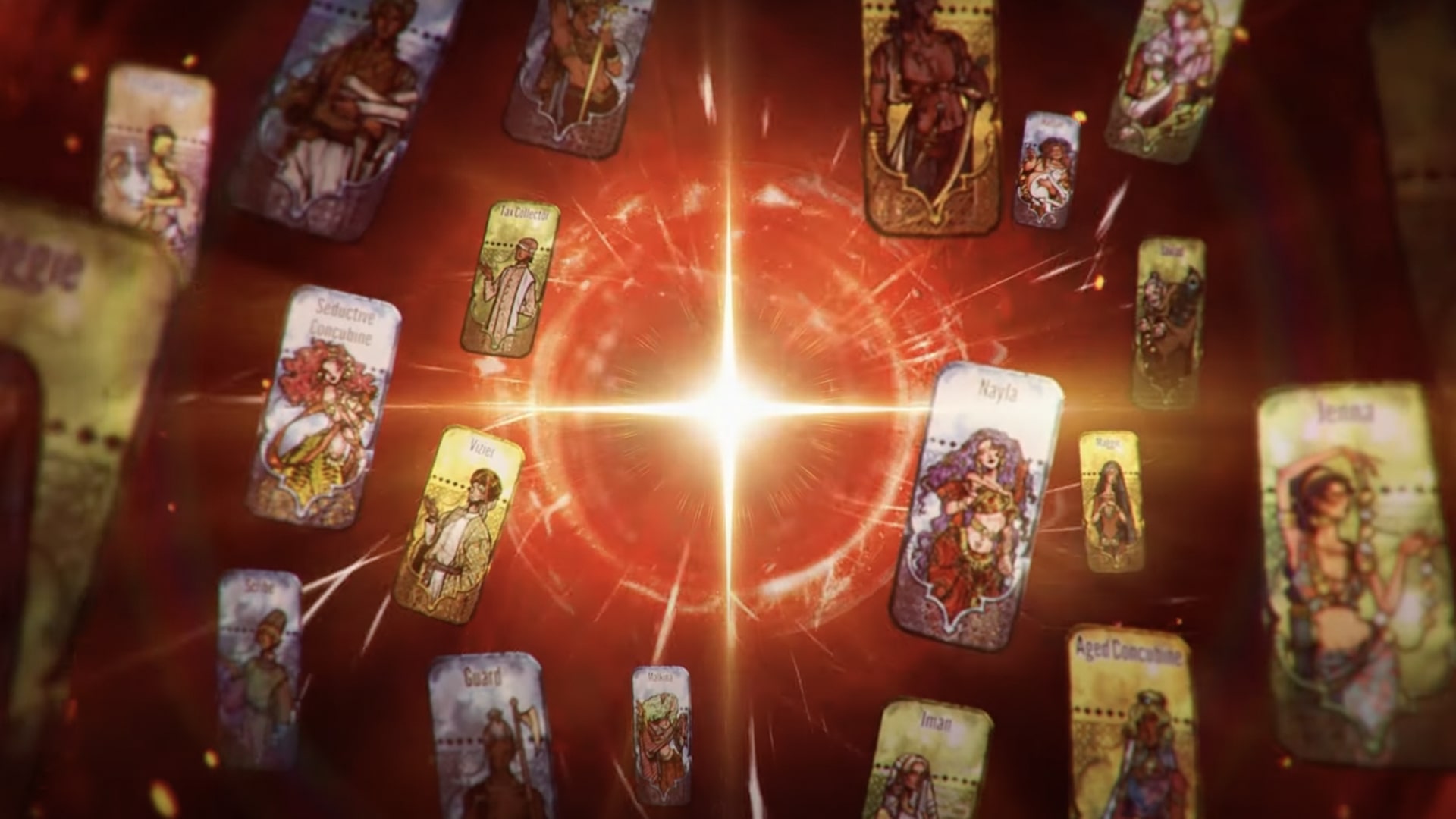Indie no more: Sultan’s Game becomes China’s breakout Steam hit
18 hours ago
Since its release, Sultan’s Game, a card-based role-playing game developed by a team of just over a dozen people, has gained widespread attention. Its distinctive visual style and narrative-driven approach have helped it move beyond niche circles, making it one of the most discussed Chinese games of the year.
The game’s success stands out in two key areas. First, commercially: according to data from VG Insights, Sultan’s Game has generated USD 12.4 million in revenue, selling more than 660,000 copies. For comparison, most indie games are considered successful if they sell even 20,000 copies.
Second, in terms of online reach: the game has become a viral topic on platforms like Xiaohongshu and Bilibili. A reporter from 36Kr, using a Xiaohongshu account with only 70 followers, posted a game-related note that received over 10,000 views and nearly 200 comments in just three days. A search for “Sultan” on Xiaohongshu now yields close to 100,000 posts.
At the same time, user-generated content has proliferated across Douyin and Xiaohongshu, including story reenactments and cosplay videos.
When marketing doesn’t matter, gameplay doesWhy did Sultan’s Game perform so well? The simplest and most compelling reason is that it is genuinely enjoyable to play.
According to Qianshui (pseudonym), the editor-in-chief at TapTap—a partner in the game’s promotion and distribution—the platform scores games internally based on gameplay, mechanics, narrative, and audiovisual design. These scores influence a game’s visibility and support levels. Sultan’s Game, Qianshui said, ranked highly from the outset. “It was already a hit during the playtest phase, and even in early access, its polish was far above average.”
Instead of using domestic distribution channels, the developers launched on Steam, one of the world’s largest gaming platforms. They also chose a pay-once model without in-app purchases. According to a representative from publisher 2P Games, the game had almost no paid user acquisition. Its commercial performance came down to one factor: the quality of the game itself.
The appeal lies primarily in two areas: narrative and visual presentation.
Narratively, Sultan’s Game offers rich content and tonal complexity. Whether players comply with the sultan’s rule or rebel against it, both paths offer substantial plot development.
Players have highlighted the emotional depth of the story. Some praised the portrayal of love and hope, describing the protagonist’s wife Maggie as “a guiding light in the chaos and darkness.” Others favored the chaotic evil routes, enjoying the more twisted narrative arcs.
“The harder a story branch is to unlock, the more unhinged we made the writing. If the player made it that far, they probably sacrificed a lot to get there,” said Zuanka (pseudonym), the game’s writer. The emotional range and sense of agency contribute to the game’s tension.
Visually, the game distinguishes itself from the typical Japanese anime-influenced or US-style photorealistic indie titles. Set in a fictional medieval empire, Sultan’s Game features vibrant costumes and iconography inspired by Middle Eastern Islamic aesthetics, including mosaic tiles and Byzantine-style gold leaf backdrops. These elements create a mystical and immersive atmosphere.
Timing is everything, especially in gamingBeyond quality, market timing and context also played significant roles in the game’s success.
A key factor is the growing number of Chinese players on Steam. In February, Valve reported that over half of its user base was using the platform in simplified Chinese. This reflects a broader trend: as China’s gaming industry matures, more players are willing to pay for high-quality games. Steam’s international scope and extensive content are increasingly appealing.
Last year’s Black Myth: Wukong, which sold millions of copies on Steam, helped popularize the platform further. Steam’s data showed that just four hours after the Wukong pre-load began, download traffic peaked at 70 terabytes per second, a new record.
Major Chinese publishers are reinforcing the trend by releasing titles directly on Steam. Examples include NetEase’s Once Human and Marvel Rivals, Tencent’s Delta Force: Hawk Ops, and Papergames’ Infinity Nikki. These are major releases with established fanbases.
Meanwhile, platforms like Xiaohongshu and Douyin have increased their focus on gaming. Xiaohongshu recently reported a 34% rise in April’s in-feed gaming traffic, with role-playing, female-focused, and strategy games topping the charts.
The platform is now incentivizing game content creation and recruiting talent from live streaming platforms like Huya and Douyu to expand its gaming ecosystem.
Not easily replicableDespite being considered an indie game, Sultan’s Game‘s success does not necessarily signal a thriving indie scene in China.
Industry interviews paint a mixed picture. While there are more developers and breakout games like Volcano Princess and BlazBlue Entropy Effect, long-term viability remains an issue.
TapTap has supported indie games since its inception and maintains a dedicated team to scout and sign titles. According to Qianshui, the overall quality of indie games is improving, and more titles are gaining traction.
At the inaugural “Only” indie game expo held in Beijing in April, organizers said tickets sold out and more than 1,000 people attended, surpassing expectations.
This surge of interest is partly the result of difficult circumstances. During China’s two-year licensing freeze, many studios downsized or shut down. Developers laid off during that period often turned to indie development out of necessity.
Still, profitability remains elusive. “People thought they were escaping the red ocean of hypercompetitive studios for a promised land, only to find that PC gamers care about fun, not price,” one developer said.
Steam offers a platform for those unable to secure domestic licenses. However, developers used to monetizing through in-app purchases often misjudge the Steam audience, overestimating sensitivity to pricing and underestimating the importance of gameplay quality.
Qianshui noted that the indie ecosystem has not improved significantly in financial terms. Few games recoup their development costs. For teams aiming for domestic release, the licensing process is still slow and difficult. With investors becoming more selective, indie games struggle to match commercial titles in terms of revenue performance.
Even Sultan’s Game was a high-risk effort. It was the final project of a company on the brink of failure. Over 14 months, the team produced more than 1.4 million words of in-game text. At peak output, Zuanka was writing 17,000 finished words per day. He acknowledged that replicating such an effort would be nearly impossible, even with the same team.
In that sense, Sultan’s Game and Black Myth: Wukong are spiritual siblings. Both are polished, category-defining games. But their successes remain the exception, not the rule.
KrASIA Connection features translated and adapted content that was originally published by 36Kr. This article was written by Lan Jie for 36Kr.
...Read the fullstory
It's better on the More. News app
✅ It’s fast
✅ It’s easy to use
✅ It’s free









